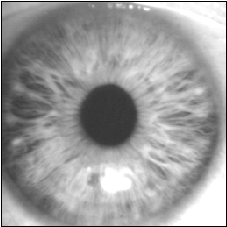Next: Image Analysis Up: No Title Previous: No Title
![]()
![]()
![]()
Next: Image Analysis Up: No Title Previous: No Title
Efforts to devise reliable mechanical means for biometric personal identification have a long and colourful history. In the Victorian era for example, inspired by the birth of criminology and a desire to identify prisoners and malefactors, Sir Francis Galton F.R.S. [13] proposed various biometric indices for facial profiles which he represented numerically. Seeking to improve on the system of French physician Alphonse Bertillon for classifying convicts into one of 81 categories, Galton devised a series of spring-loaded ``mechanical selectors" for facial measurements and established an Anthropometric Laboratory at South Kensington [13]. Other biometric identifiers that have been adopted historically, ranging from cranial dimensions to digit length, as well as some of the numerous geometric facial measurements currently being tried, are described in [17],[25].
Today there is renewed interest in reliable, rapid, and unintrusive means for automatically recognizing the identity of persons. Security breaches in access to restricted areas at airports are known to have contributed to terrorism; and credit card fraud now costs six billion dollars annually [3]. Other applications for high confidence personal identification include passport control, bank automatic teller machines, protected access to premises or assets, law enforcement, government intelligence, entitlement verification, birth certificates, licenses, and any existing use of keys or cards. Some of the identifying biometric features now under investigation for potential use include hand geometry, blood vessel patterns in the retina or hand, fingerprints, voice-prints, and handwritten signature dynamics. The critical attributes for any such measure are: the number of degrees-of-freedom of variation in the chosen index across the human population, since this determines uniqueness; its immutability over time and its immunity to intervention; and the computational prospects for efficiently encoding and reliably recognizing the identifying pattern.
The possibility that the iris of the eye might be used as a kind of optical fingerprint for personal identification was suggested originally by ophthalmologists [1],[12],[24], who noted from clinical experience that every iris had a highly detailed and unique texture, which remained unchanged in clinical photographs spanning decades (contrary to the occult diagnostic claims of ``iridology"). Among the visible features in an iris, some of which may be seen in the close-up image of Figure 1, are the trabecular meshwork of connective tissue (pectinate ligament), collagenous stromal fibres, ciliary processes, contraction furrows, crypts, a serpentine vasculature, rings, corona, colouration, and freckles [1],[11],[12],[24]. The striated trabecular meshwork of chromatophore and fibroblast cells creates the predominant texture under visible light [24], but all of these sources of radial and angular variation taken together constitute a distinctive ``fingerprint" that can be imaged at some distance from the person. Further properties of the iris that enhance its suitability for use in automatic identification include (i) its inherent isolation and protection from the external environment, being an internal organ of the eye, behind the cornea and the aqueous humour; (ii) the impossibility of surgically modifying it without unacceptable risk to vision; and (iii) its physiological response to light, which provides a natural test against artifice.

Figure 1: Close-up image illustrating the trabecular meshwork and other features
of a human iris.
A property the iris shares with fingerprints is the random morphogenesis of its minutiae. Because there is no genetic penetrance in the expression of this organ beyond its anatomical form, physiology, colour and general appearance, the iris texture itself is stochastic or possibly chaotic. Since its detailed morphogenesis depends on initial conditions in the embryonic mesoderm from which it develops [11], the phenotypic expression even of two irises with the same genetic genotype (as in identical twins, or the pair possessed by one individual) have uncorrelated minutiae. In these respects the uniqueness of every iris parallels the uniqueness of every fingerprint, common genotype or not. But the iris enjoys further practical advantages over fingerprints and other biometrics for purposes of automatic recognition, including (iv) the ease of registering its image at some distance from the Subject without physical contact, unintrusively and perhaps inconspicuously; and (v) its intrinsic polar geometry, which imparts a natural coordinate system and an origin of coordinates.
Unknown until the present work was whether mathematically there were sufficient degrees-of-freedom, or forms of variation in the iris among individuals, to impart to it the same singularity as a conventional fingerprint. Also uncertain was whether efficient algorithms could be developed to extract a detailed iris description reliably from a live video image, generate a compact code for the iris (of minuscule length compared with image data size), and render a decision about individual identity with high statistical confidence, all within less than one second of computation time on a general-purpose microprocessor. The present report resolves all of these questions affirmatively and describes a working system.
![]()
![]()
![]()
Next: Image Analysis Up: No Title Previous: No Title